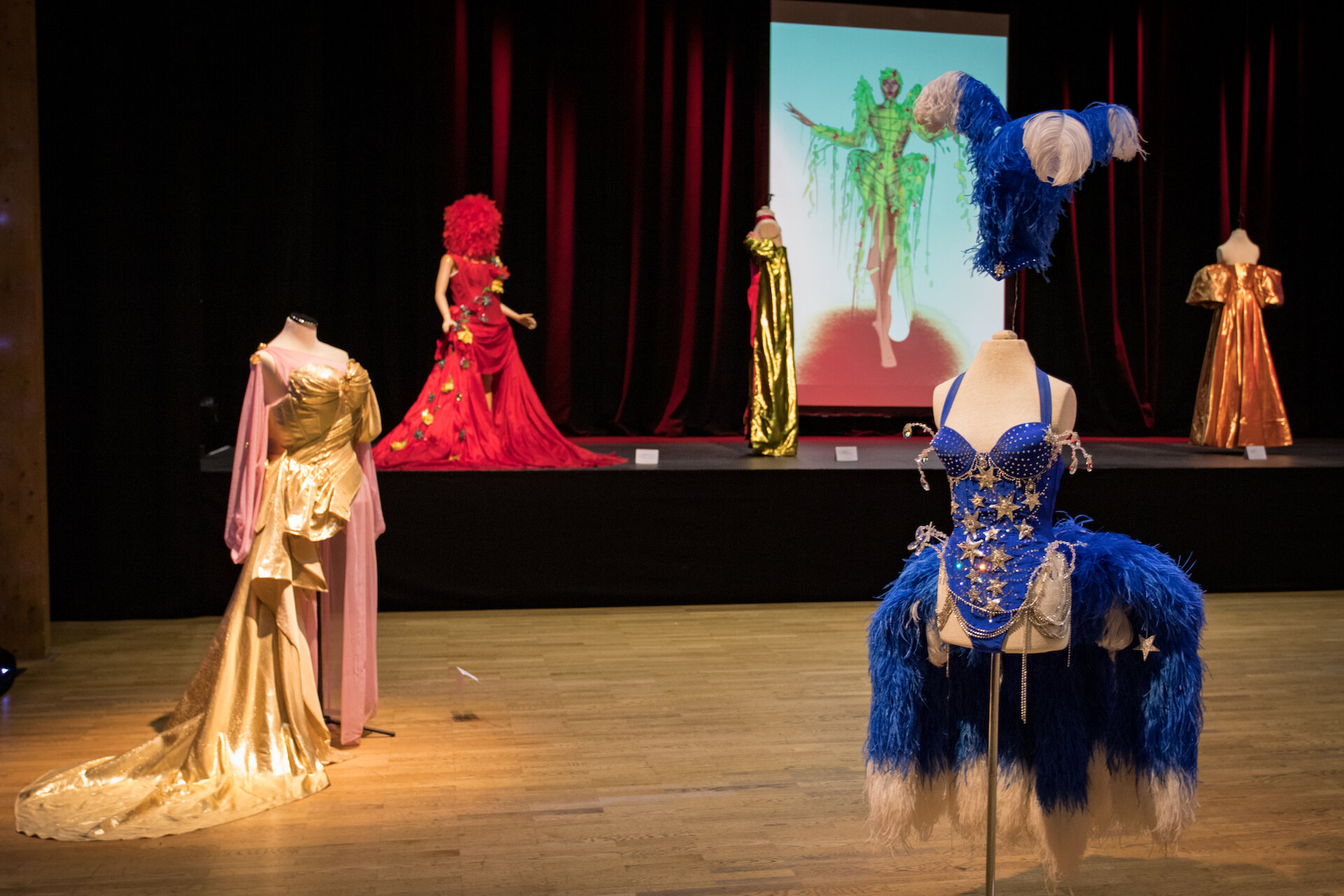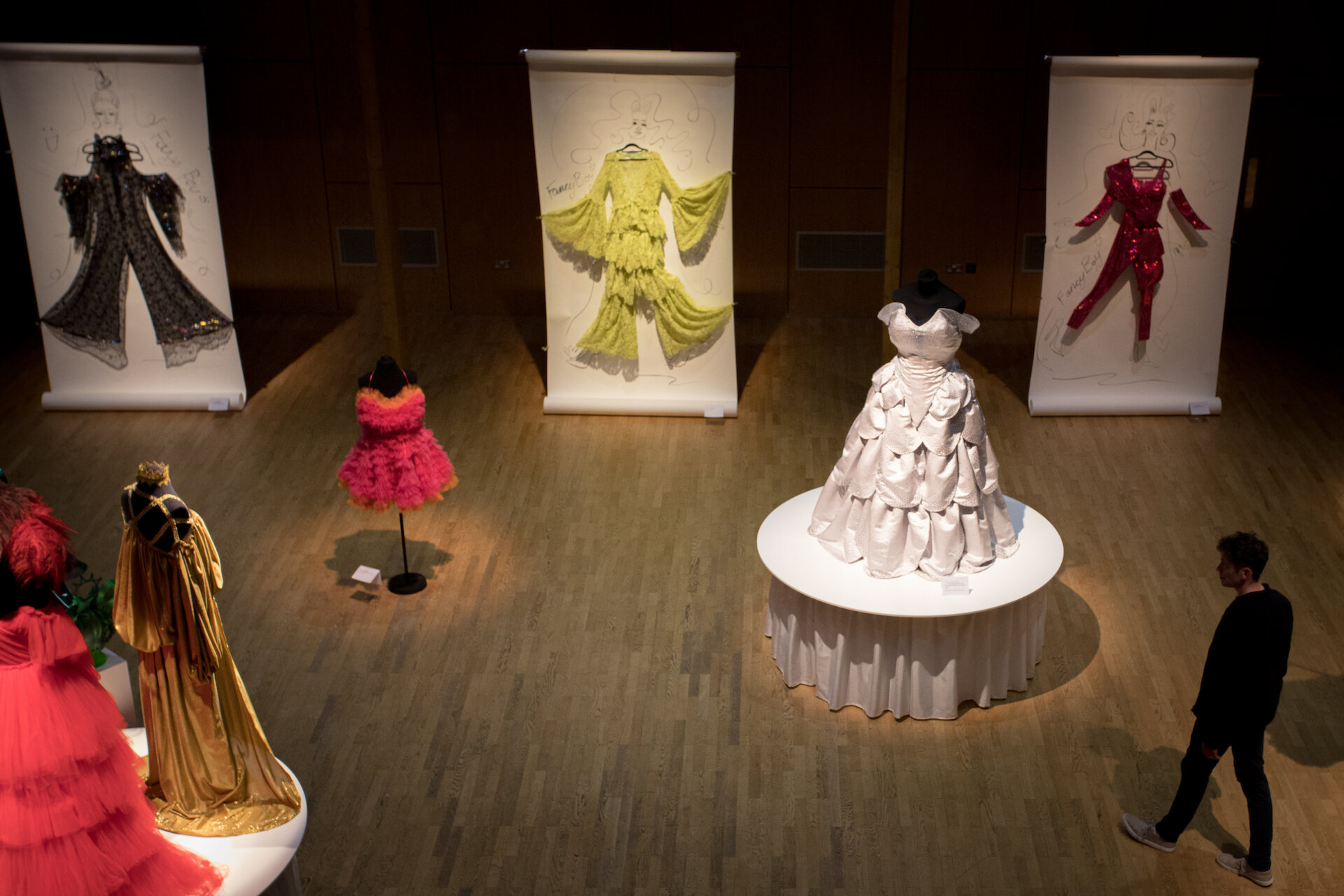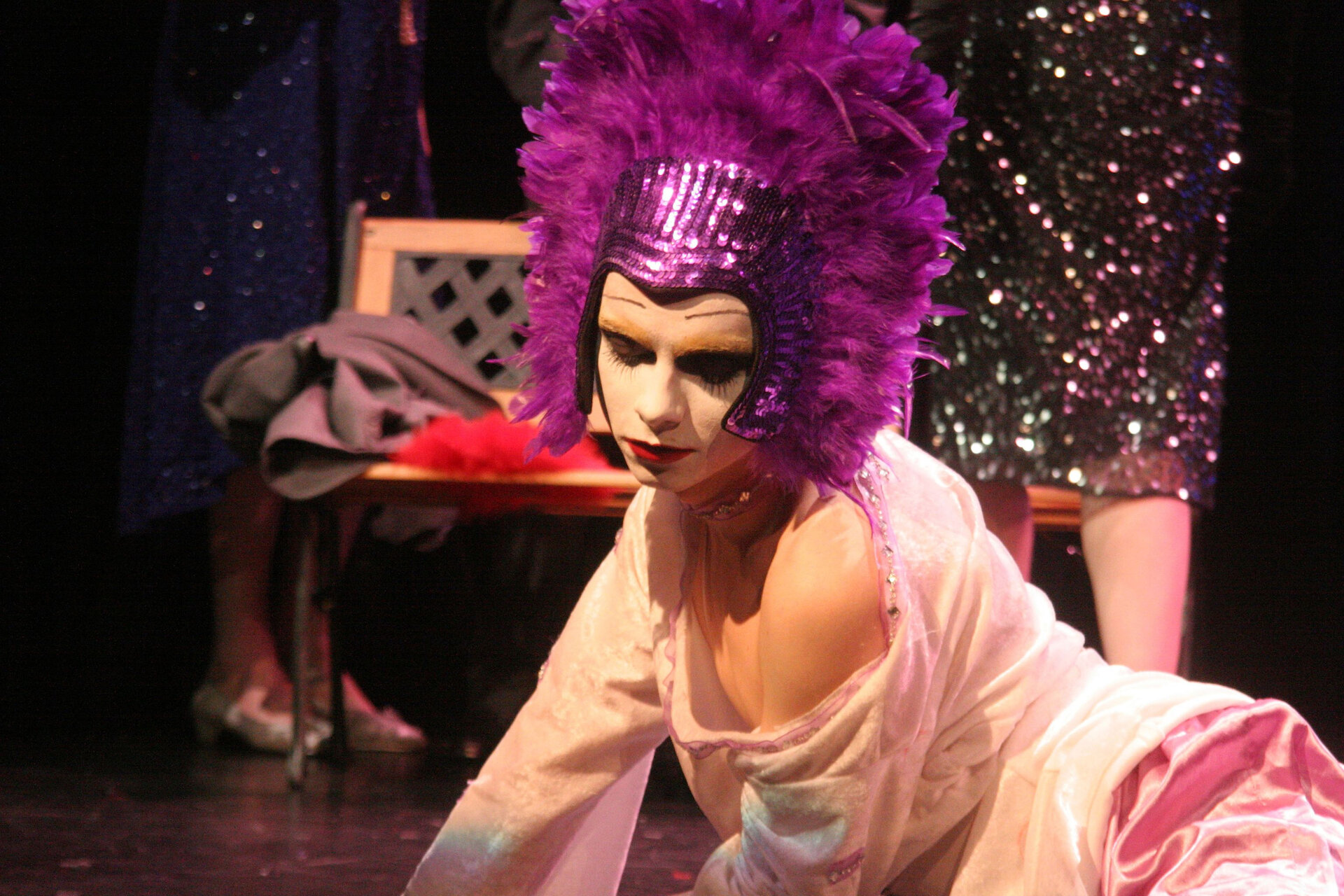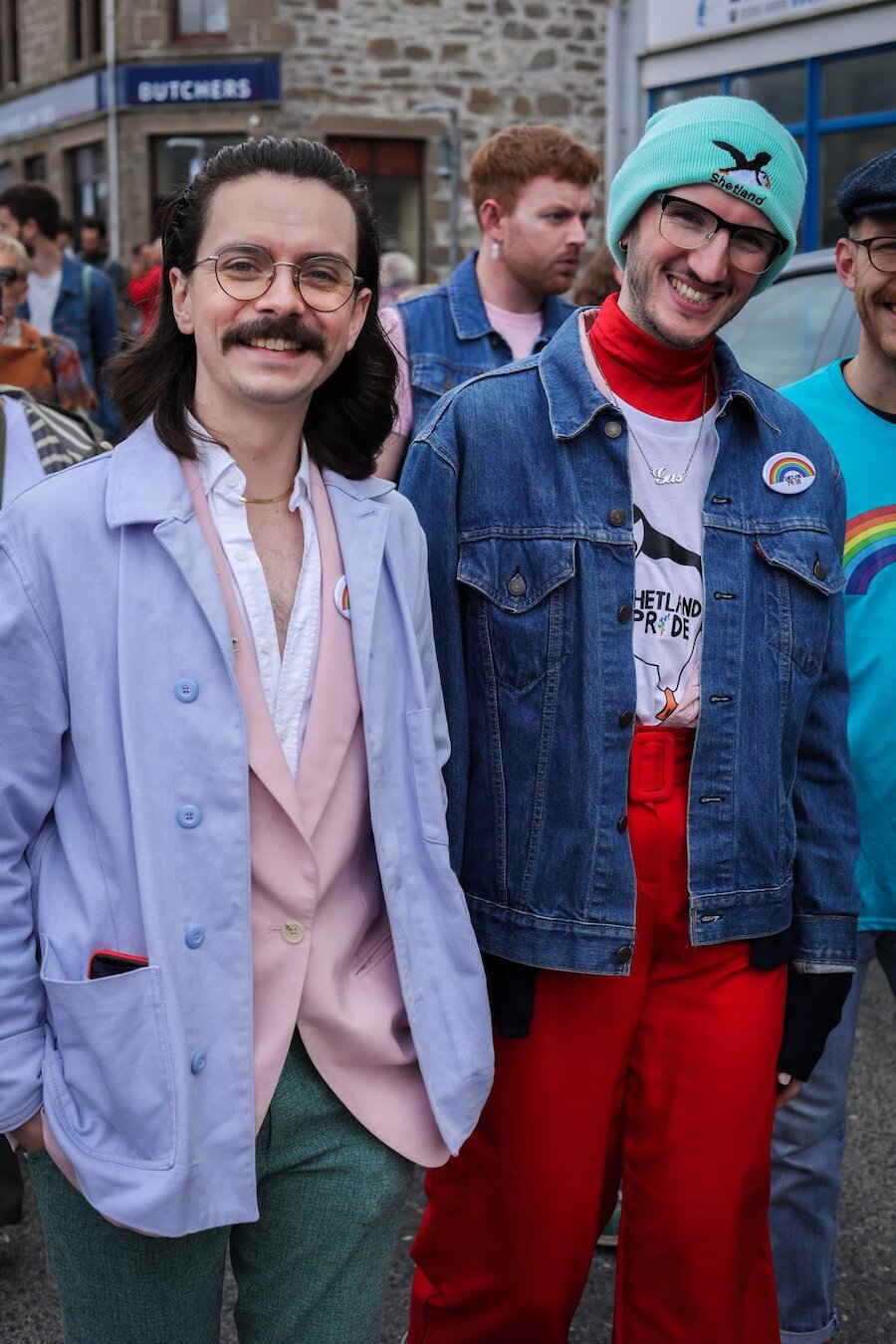“This exhibition feels a bit crazy because it’s taking my life growing up in Shetland and my life in London over the past ten years and bringing it together,” says Harry Whitham, whose glittering drag queen costume designs have been beamed into the homes of millions of TV viewers.
The myriad riches of Shetland’s cultural history are well-documented, but the islands have not traditionally been recognised as a hotbed for producing high-end costume creators for flamboyant queens of the small screen.
It is of no little significance that Lerwick-born, Whiteness-raised designer Harry has been afforded the entirety of arts venue Mareel’s main auditorium for the month of July – coinciding with Shetland’s first ever Pride event – to show off some of his creations of the past five years.
The diverse array of glitzy costumes, the fulcrum being a trio of red, green and gold pieces representing the “core beginnings” of Harry’s Fancy Boy moniker and brand, form an exhibition quite unlike anything previously seen in the islands.
Borrowed from their glamorous owners for the exhibition, several of the outfits have been worn by participants on the UK version of reality TV show RuPaul’s Drag Race.





